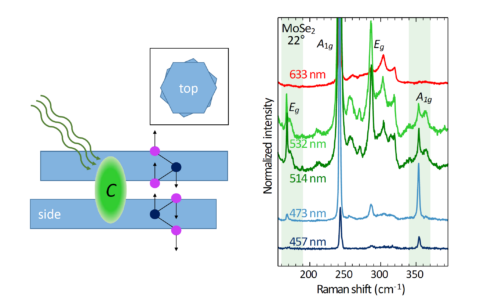Interlayer Raman modes in twisted bilayer transition metal dichalcogenides
Atomically thin, two-dimensional semiconductors are widely used to create platforms for the investigation of physical phenomena like superconductivity. In order to build suitable structures, single-layer materials are stacked on top of each other to form multi-layered sandwiches. However, only if the coupling between the constituting layers is sufficiently strong, the desired physical effects can be observed.
We have reported a simple and fast method to probe the interlayer coupling in twisted bilayer TMDCs – an important materials’ class in the field of two-dimensional semiconductors. By using Raman spectroscopy in resonance with certain optical transitions, additional Raman peaks become visible in the spectra of (twisted) bilayer TMDCs that are not allowed in single-layer materials. The results show that these modes indicate electronic coupling between the layers also in twisted bilayers, i.e., stacks of two layers that are twisted with respect to each other.
For more information, see our publication in Physical Review B:
Eileen Schneider, Kenji Watanabe, Takashi Taniguchi, and Janina Maultzsch
Phys. Rev. B 110, 125431 (2024). (editor’s suggestion)
